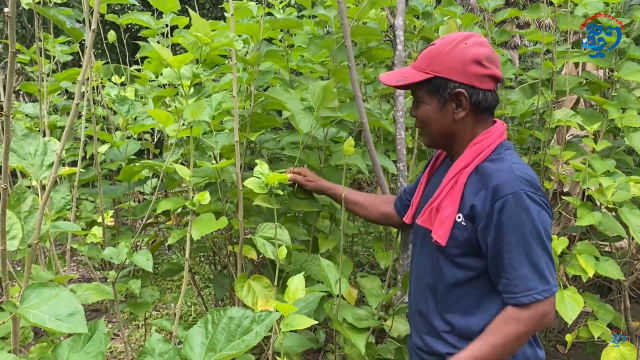Cultivating Mulberry for Silkworms

- By Zul Rorvy
- September 3, 2023 12:00 PM
SIEM REAP — Sericulture or silk farming is a traditional practice in Cambodia. For farmers, relying on the worms to produce quality silk demands patience and commitment. Color Silk Cambodia, a community that helps women develop their skills as weavers, aims to keep the whole production process local from collecting the silk thread on the cocoon to selling products made of silk.
And this involves having healthy silkworms. As Noeum It, a specialist of mulberry plantations and silkworms, explained during an interview, one has to choose the right diet for one’s worms, which means quality mulberry leaves.
_1693631048.png)
Zul Rorvy: To begin with, how do you harvest the mulberry plants?
Noeum It: There are two ways to do it. If you do not need the stem, you can cut it before picking up each leaf. However, the stems can be useful as we keep them for cloning. There are 80 families in this community who depend on these plants. They are very easy to grow after cloning.
Zul Rorvy: Why are there different sizes of leaves?
_1693631101.png)
Noeum It: The sizes of the leaves depend on the amount of rainwater that the plants receive. If it does not rain for several days in a row, the leaves become smaller and more curvy. But with enough water, the leaves are bigger and darker.
Zul Rorvy: Do you only feed the smaller worms the newer leaves?
Noeum It: No, it is not always like that. When they are small, of course, we give them smaller leaves that grow at the tip of the plant. When they get older, we feed them the leaves that grow at the lower level. After that, when they grow big enough, we choose the leaves at the bottom, but we still need to make sure that the leaves are clear from fungi and any other bad insects. We pick the leaves in the middle of the day. If we pick them in the morning, the moisture on the plant will make the worms sick. During rain, we also cannot pick the leaves. The worms know what they are eating very clearly. If you blend the mulberry leaves with leaves of different plants, the worms won’t touch them. They even know the specific smell. When I hover different leaves near their noses, they do not get up and follow.
_1693631215.png)
Zul Rorvy: How do you look after the mulberry plants?
Noeum It: Basically, we need to clear the grass underneath and loosen the soil. During the dry season, we have to put hay or similar thing near the root so the soil can stay hydrated for a longer period of time. Of course, during the rainy season, that is not necessary.
Zul Rorvy: What are the leaves that are not good for worms?
Noeum It: Leaves that are contaminated by ants are not chosen. Leaves attacked by insects and fungi are not safe for the worms either. Good leaves will allow the worms to grow very quickly. Once planted, the mulberry trees can be harvested between four to six years.
To read an article on the silk-weaving training program and silk-worm farming support provided by Color Silk Cambodia, click here.
Conducted in Khmer for ThmeyThmey News, the interview was translated by Ky Chamna for Cambodianess News.















